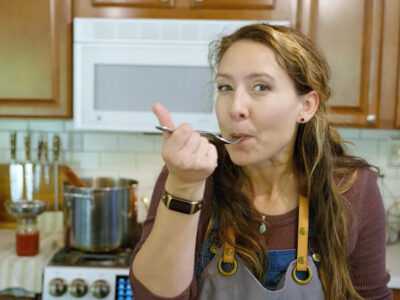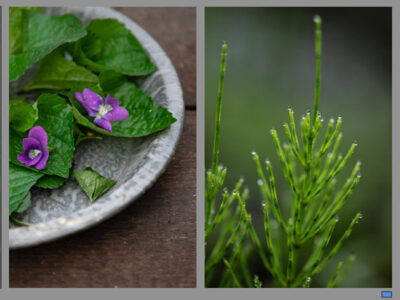Learn how to forage for stinging nettles. Once you know all of the stinging nettle benefits you'll be making sure to preserve them for medicinal uses for year-long use.
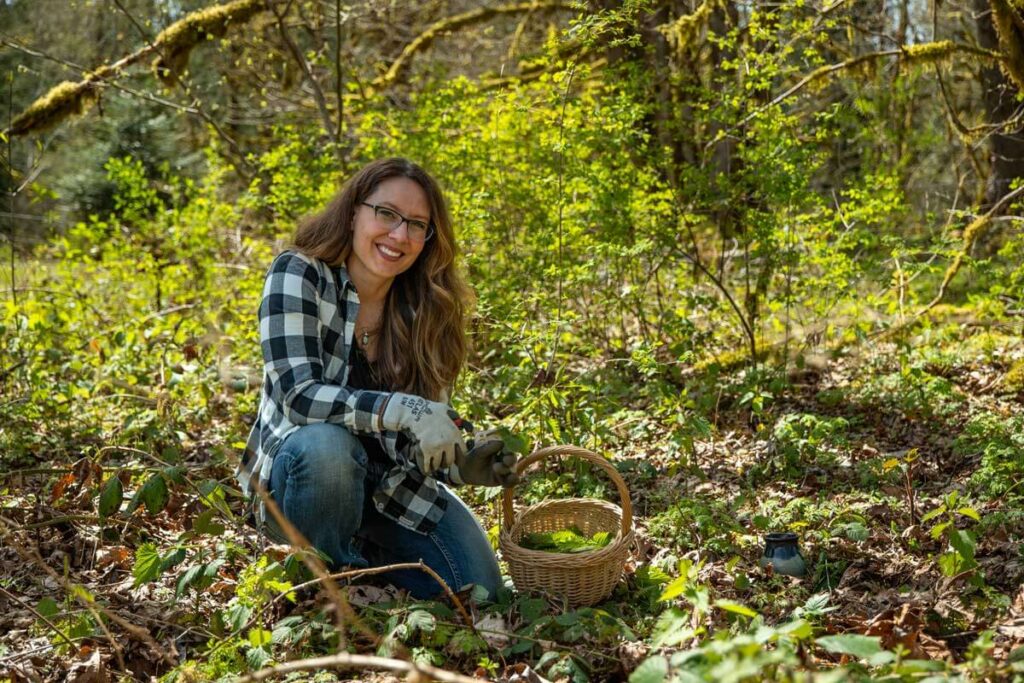
Why I Love Stinging Nettles
I love gardening and growing a year's worth of food, but when food pops up in the forest without me having to do a single thing? I love that even more! This is why I love to forage for wild edibles.
In the springtime, stinging nettles and morel mushrooms are some of the first food that pops up for harvest. (Learn how to forage for morel mushrooms here.)
Growing up, there were stinging nettles all over our property. You learned real quick to steer clear of them, or else you'd get painful welts anywhere the tiny needles touched your skin.
Stinging nettles have so many great properties. They are edible as food, have multiple medicinal uses, and are packed with vitamins.
This is one medicinal herb that's hard to grow in a medicinal herb garden because of its unique growing conditions. So I'm thrilled I can find it right in my own backyard.
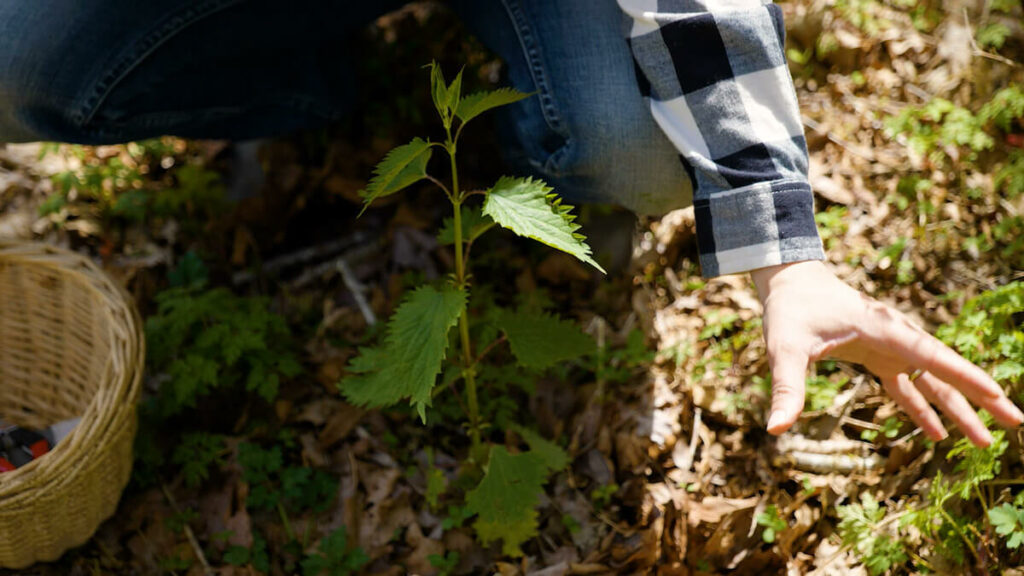
Where Do Stinging Nettles Grow
Stinging nettles like to grow in dappled shady areas with damp, well-mulched soil that is high in nitrogen. They show up in the treeline of our forest in early spring and will continue to grow throughout the summer.
I jokingly say if you don't want stinging nettles to grow, they'll grow… but if you're looking for them and want them to grow, good luck!
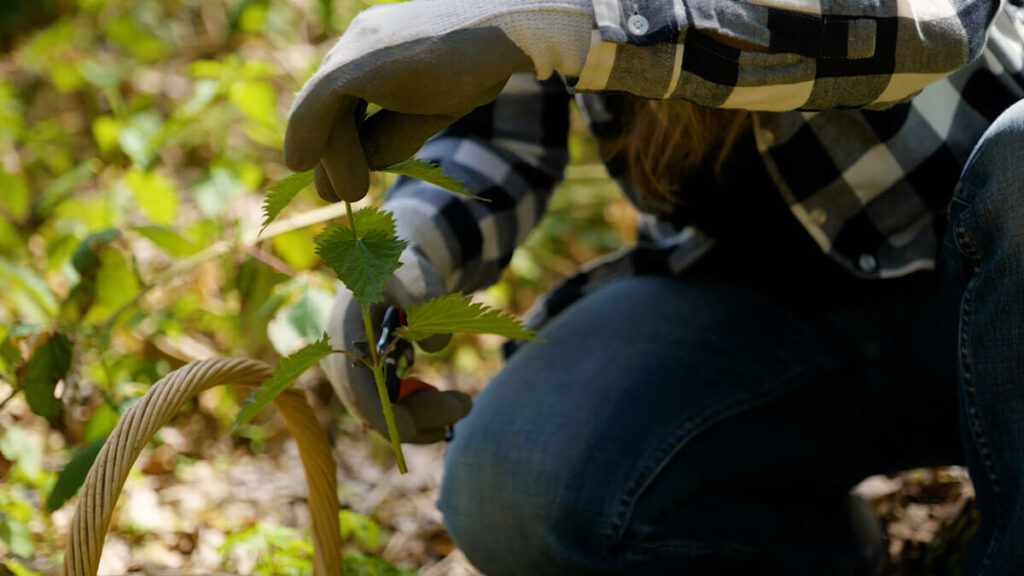
How to Harvest Stinging Nettles –Urtica Dioica (Urticaceae)
There are a few ways to harvest stinging nettles. No matter when you're harvesting them, be sure to wear gloves to protect yourself from the stinging barbs on the leaves and stems. These barbs or little needles contain histamine and serotonin, which is responsible for the stinging, itchy, red welts one experiences when brushing up against them.
There are some people who say they can harvest the leaves just right without getting stung, but for safety purposes, I'd recommend gloves.
Harvesting in Spring
When harvesting stinging nettles early in the spring for their leaves, you'll want to harvest the top 4 to 6 inches of the plant's leaves BEFORE they've begun to flower in spring and early summer. Ideally when the plant is a foot tall or shorter.
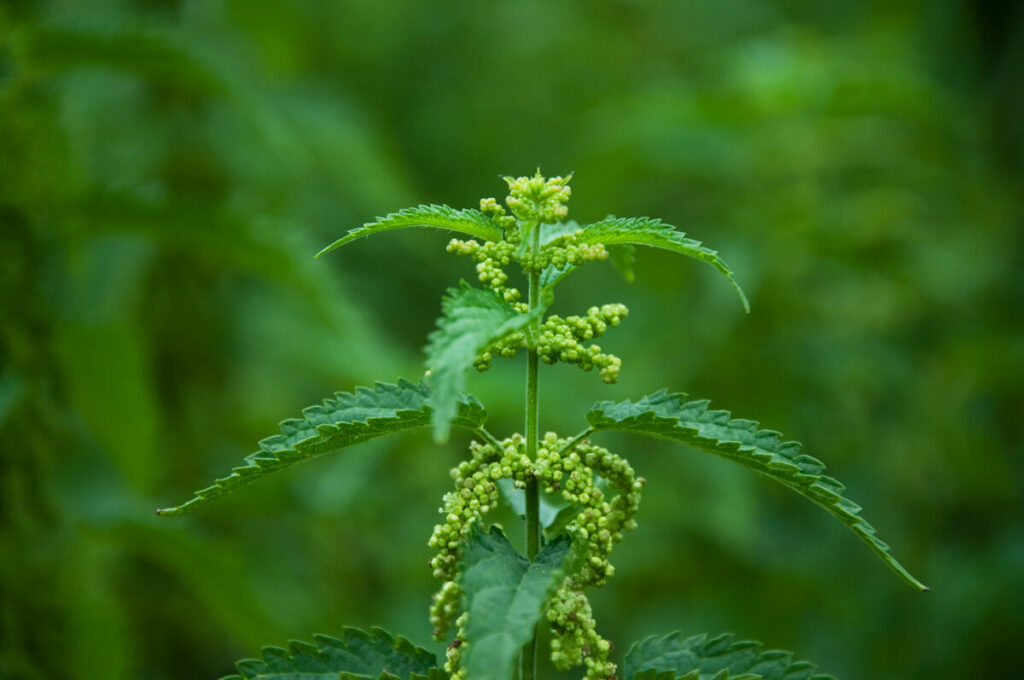
Harvesting in Fall
You can also harvest stinging nettle seeds in the fall, and they have their own medicinal properties. For this post, we're focusing on harvesting the leaves for medicinal and culinary uses. Let me know if you'd like to see a video and blog post on harvesting and using stinging nettle seeds!
Important Note: I am not a doctor. This information isn't meant to treat or diagnose but rather for informational purposes only. Always check with your medical practitioner before adding herbs into your routine.
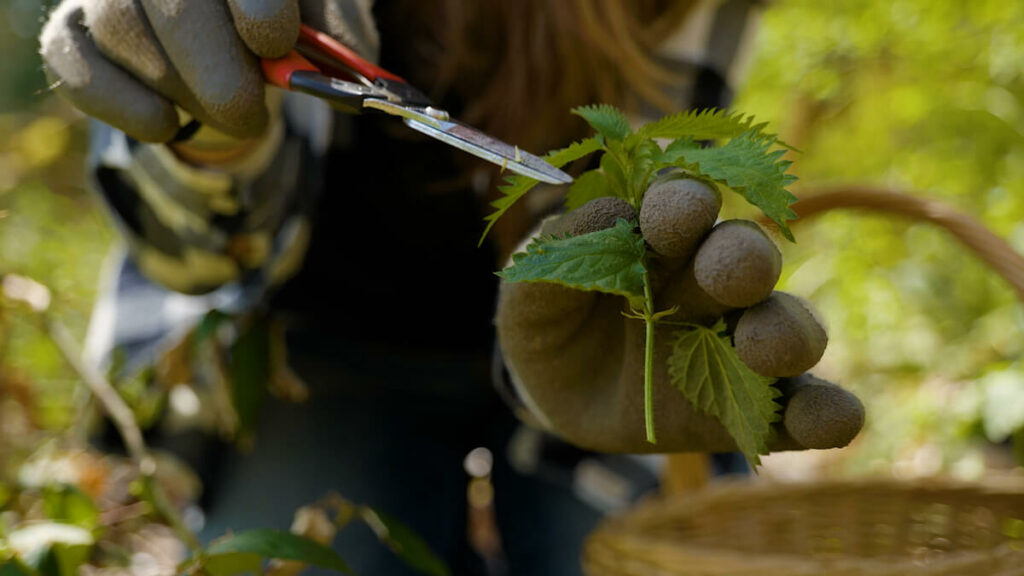
Stinging Nettle Benefits
The stinging portion of the stinging nettle contains histamine, but the leaves have many benefits (including anti-histamine effects, which counter its venomous little zaps). There are many health benefits of using stinging nettle medicinally, and they also pack a good nutritional punch in your diet.
According to Mount Sinai, “Stinging nettle has been used for hundreds of years to treat painful muscles and joints, eczema, arthritis, gout, and anemia. Today, many people use it to treat urinary problems during the early stages of an enlarged prostate.”
Stinging nettle leaf contains calcium, magnesium, and iron as well as vitamins A, C, E, and K just to name a few.
Any time you're using something medicinally, always do your own research. Just because something is natural doesn't mean it's right for you or safe for everyone.
Stinging Nettle Benefits:
- Helps alleviate seasonal allergies.
- Helps alleviate joint pain and arthritis.
- Aids the immune system.
- Can be used as a kidney tonic.
- Can be used as a diuretic.
- Supports the urinary system
Who Shouldn't Use Stinging Nettles
It's important to note that stinging nettles can affect blood glucose levels. Hence, those with diabetes need to pay close attention to that and only use stinging nettle at a therapeutic medicinal dose, working alongside their medical practitioner.
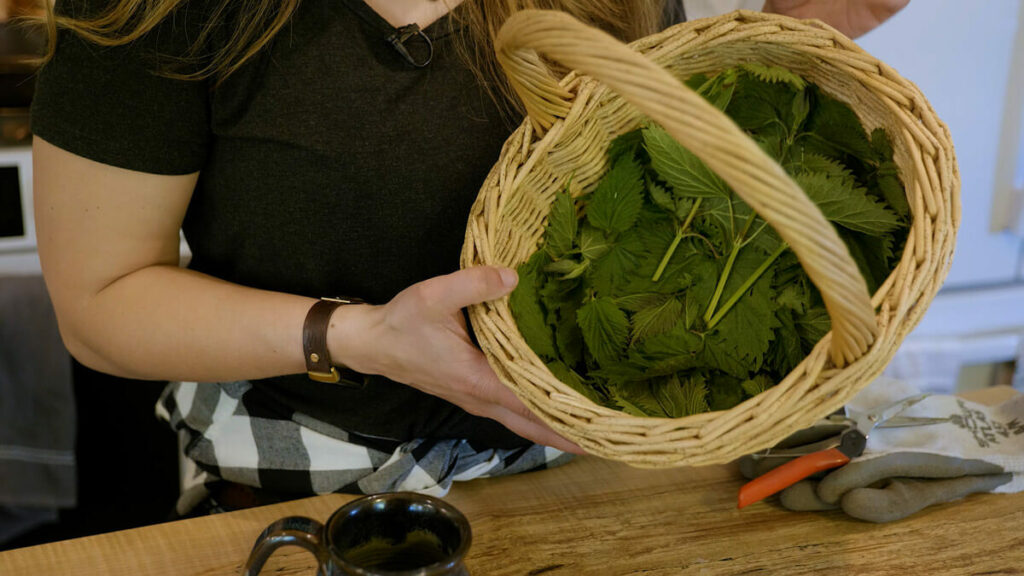
How to Use Stinging Nettles Fresh
One of my favorite ways to use fresh stinging nettles is to saute them in a pan with some garlic and butter and then top it with a fried egg.
Cooking the stinging nettles rids them of their stinging ability. Also, if you allow your stinging nettles to sit at room temperature and wilt for about two days, the stinging portion of the leaves and stem will disappear, and you can handle them with bare hands.
However, I don't like to wait that long to use my nettles, so I just wear gloves when preparing them fresh (and when preserving them).
Stinging nettles can be used in many of the ways you would use cooked spinach or kale, and I happen to really enjoy the flavor.
Some other ways to eat stinging nettles are:
- Added to soups or stews.
- Sauteed and served as a side.
- Added to stir fry.
- Baked into a quiche.
- Stinging nettle tea (more on this below).
Another favorite way I use stinging nettle once it's been freeze-dried is to add it to my homemade lasagna. Because it's freeze-dried, it doesn't make the lasagna soupy, like adding fresh spinach can do, so I just layer in some of the freeze-dried stinging nettle leaves in between each layer. So good!
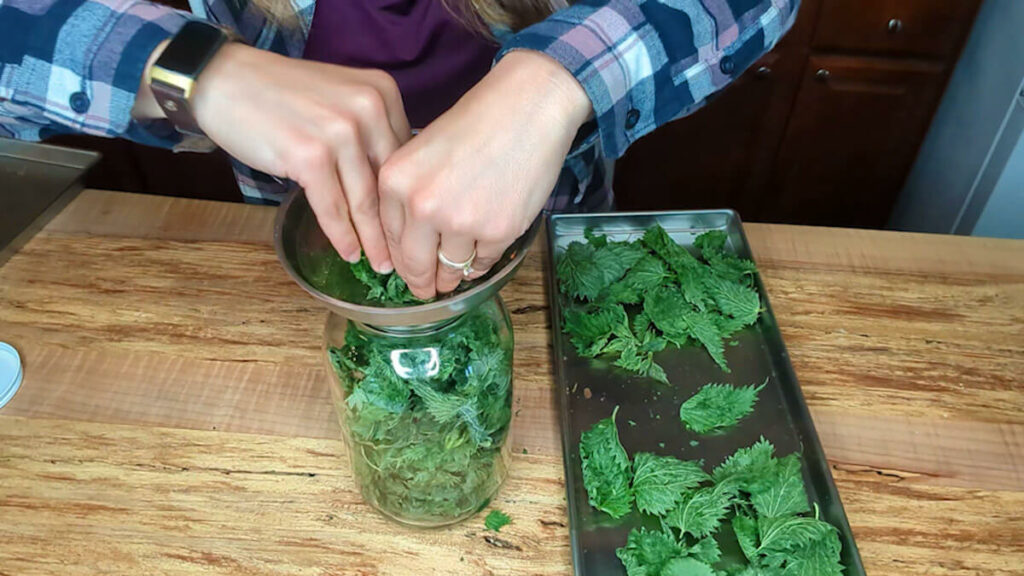
How to Preserve Stinging Nettles
Though I love to enjoy stinging nettles fresh in the early spring, my main goal when foraging for this plant is its medicinal properties. I like to have a large amount on the shelf for making a hot herbal infusion (aka herbal tea) whenever needed.
Anytime you're foraging, you want to be aware of the location that you're foraging from. If the plants are next to a roadway, you'll want to make sure the plants haven't been sprayed with harmful chemicals. (Here are the rules I follow for foraging wild edibles.)
Because I foraged for my stinging nettles in our forest, I know they're free from harmful sprays, but I still give them a good wash since deer roam there.
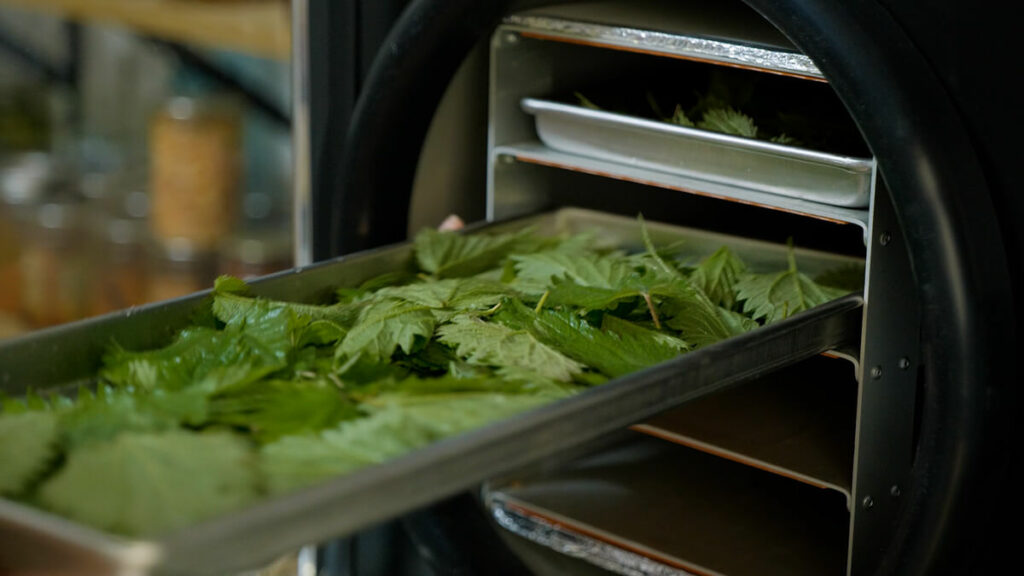
Freeze Dry
I use herbs in every season. One of the reasons I've turned to freeze-drying so many of my herbs is because it retains the most nutrients and medicinal properties out of all the forms of preservation.
To freeze-dry stinging nettle:
- Wash and dry the stinging nettle leaves well.
- Arrange the leaves in a single layer on the freeze-dryer trays.
- Adjust the dry temperature on the freeze dryer to 95° F (this is to maintain the medicinal properties).
- Place the trays into the freeze-dryer.
- Secure the door properly and hit start.
- Once the cycle is complete, use the “warming tray” function (to avoid condensation forming on the trays), and check to make sure the leaves are entirely freeze-dried.
- Store the whole leaves in large glass jars with an air-tight lid.
For years I dehydrated our stinging nettle to use in teas. And for years, I put off getting a freeze dryer because I didn't think I needed one with all the other forms of preservation I use here on the homestead.
But I did finally break down and get a freeze-dryer from Harvest Right, and I'll tell you what, I've truly enjoyed freeze-drying so many more foods than I ever thought I would! Harvest Right is having a huge sale right now (May 2023), where you can save up to $500!
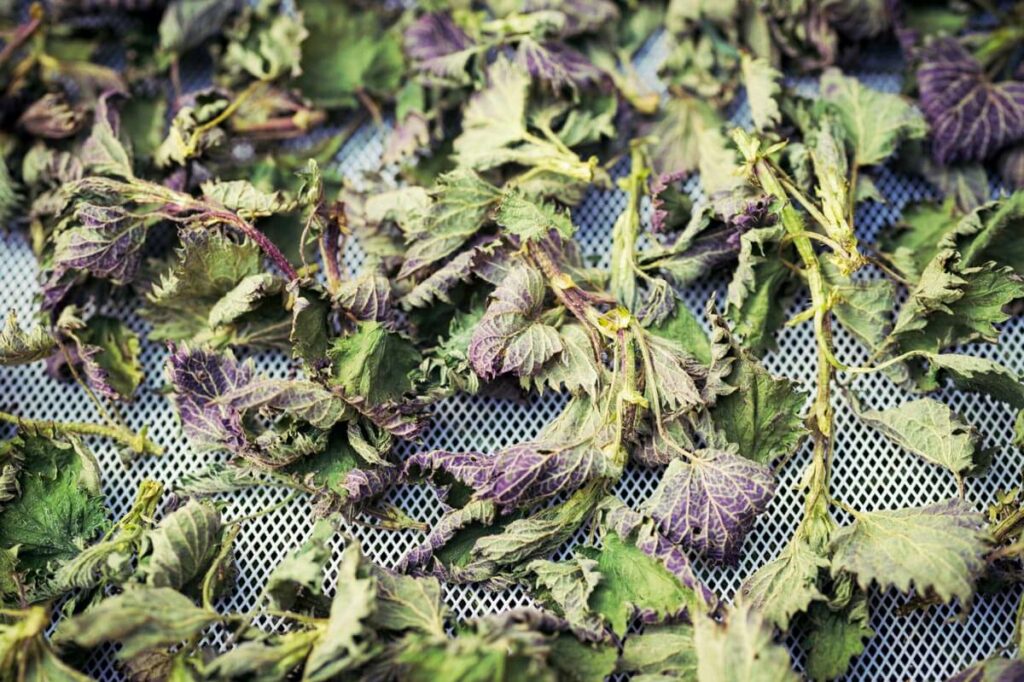
Dehydrate
A dehydrator is another great option for preserving large quantities of stinging nettle. This is the method I used for years prior to freeze-drying.
To dehydrate stinging nettle:
- Wash and dry the stinging nettle leaves well.
- Arrange the stinging nettle leaves in a single layer on the dehydrator trays.
- Dehydrate at 95° F until the leaves are dehydrated and snap in half easily.
- Store whole dried leaves in an airtight container.
Pro Tip: To know if your leaves are completely dehydrated, place a few in a ziplock baggie and zip it closed. Wait a few hours and look to see if there is any condensation on the inside of the bag. If you see any moisture, the leaves are not completely dried.
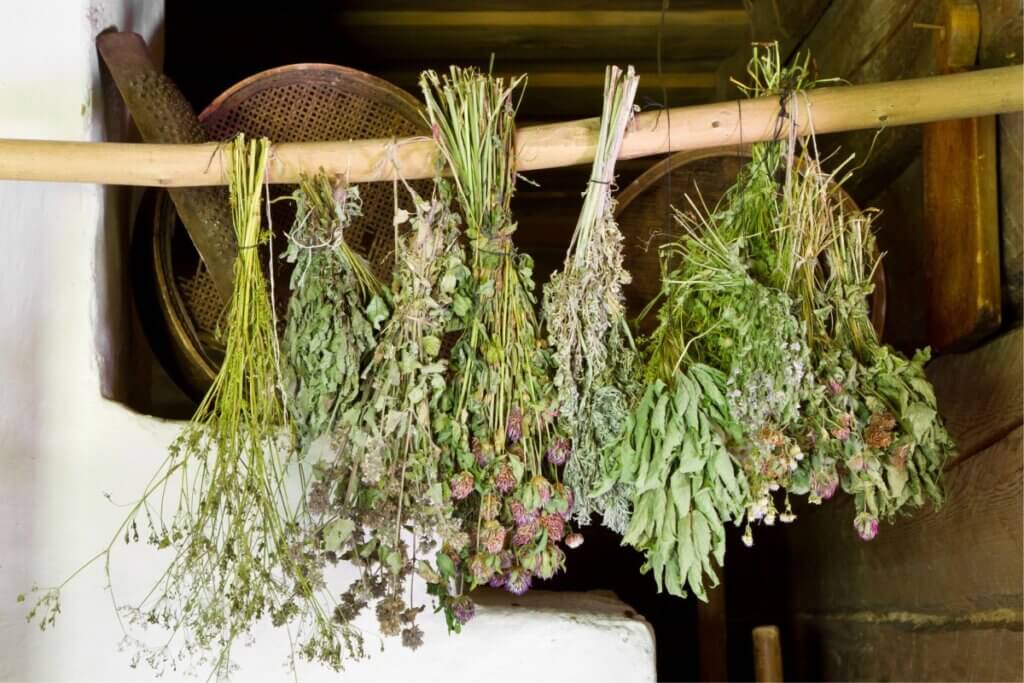
Air Dry
Once upon a time, we tried the “pillowcase method” for drying our stinging nettle. What ended up happening was we may have stuffed the pillowcase too full, and the stinging nettle ended up getting moldy before it had a chance to dry out.
I would now only recommend hang-drying, using an herb drying system, or using a dehydrator. If you want to give the pillowcase method a try, be sure it's 100% cotton or linen. A paper bag would probably work better than a pillowcase.
To air-dry stinging nettle:
- Harvest the nettle, stems, and all. Wash and dry the stinging nettle leaves well.
- Tie the bunch together by the stems.
- Hang them upside down in a well-ventilated area until the leaves are completely dried.
- Once dry, strip the leaves from the stems and store them in an airtight container (I like to use a Mason Jar).
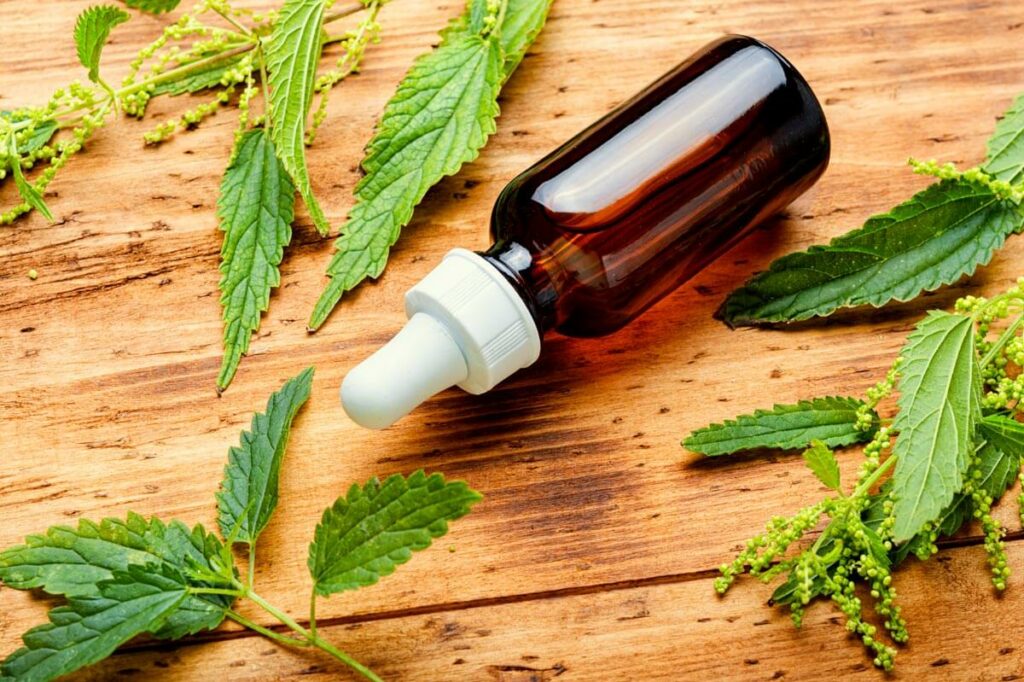
Tincture
You can make a tincture from stinging nettles. This is a great way to store your harvest for longer periods of time.
Because I have plenty of access to stinging nettle, I harvest what our family needs for the year and don't bother with tinctures.
To make a stinging nettle tincture (1:5, 40%):
- Rinse and dry the nettle leaves, then chop.
- Weigh your prepared nettle leaves in ounces.
- Take your ounces and times it by 5 for your amount of 40% alcohol.
Example 1 ounce nettles, 1:5 ratio, 5×1= 5 ounces of 40% alcohol (80 proof) - Place weighed nettles in a glass jar and pour alcohol over top.
- Smash the leaves up well to let all of the properties seep into the alcohol faster (and to ensure they stay covered by the liquid).
- Cover and set in a dark area for 6 weeks. Shake occasionally but don't worry if you forget about it.
- After 6 weeks, strain out the nettle leaf, and reserve your liquid. Store in a dark cool place out of direct sunlight, ideally in a brown or dark-colored glass bottle.
Dosage Instructions:
Use 7 to 14 ml per day, can be divided up into three separate doses (Mills & Bone, 2005). Do not use if you have diabetes unless under the care of a medical professional.
For more in-depth tincture-making and herbal use, check out my full Practical Home Herbalism Course here.
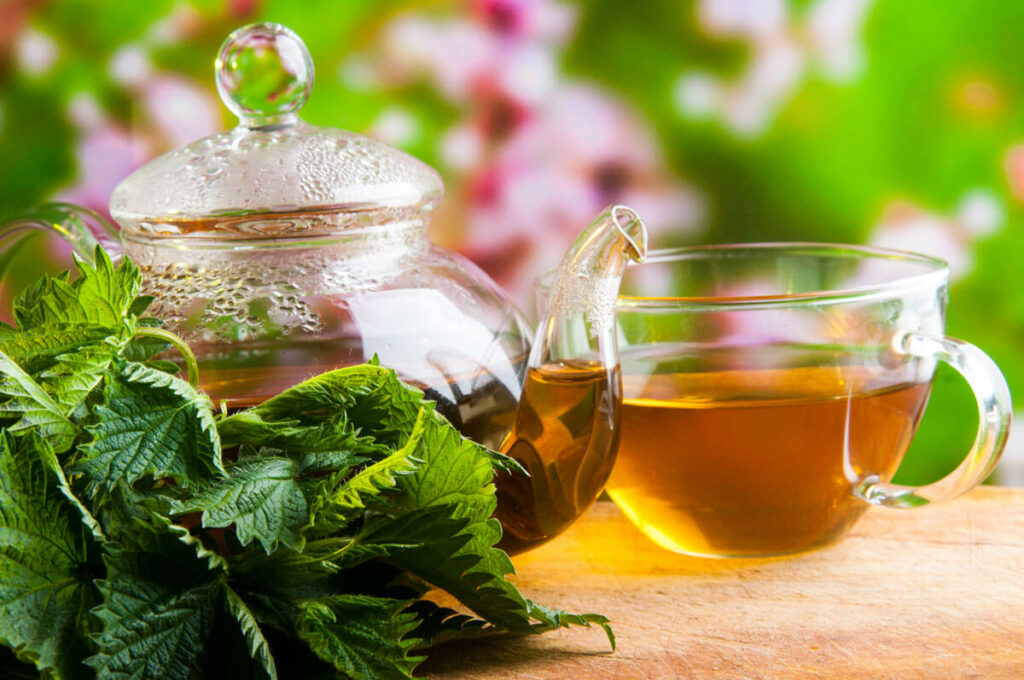
How to Store Stinging Nettles
For most of the preservation methods of stinging nettle (freeze-dried, dehydrated, or air-dried), you'll want to store the dried stinging nettles in an air-tight jar.
I try to keep the leaves as whole as possible to retain their medicinal properties.
Keep the jar on a shelf out of direct sunlight where the temperature stays at room temperature or below (about 75° F or lower).
When to Use Stinging Nettles
My family enjoys drinking stinging nettle tea much more than we enjoy taking a tincture. Click here for my stinging nettle tea recipe.
Medicinal doses of dried stinging nettle leaf used in tea or in capsule form are 6 to 12 grams/day (Mills & Bone, 2005). If you don't want to brew and sip on tea (or don't like the flavor) then putting the dried nettle leaf in a capsule is a great way to go.
If you're not growing or able to forage for stinging nettle leaf, I have purchased organic dried stinging nettle leaf here.
Resources Mentioned in the Podcast Episode:
This blog post was originally published with podcast episode #22. It has been updated to include more information and my video on harvesting and preserving stinging nettles.
- How to Forage Morel Mushroom (has the link to the false morel).
- Morel and Asparagus Quiche
- How to forage nettle leaf and make tea and infusions
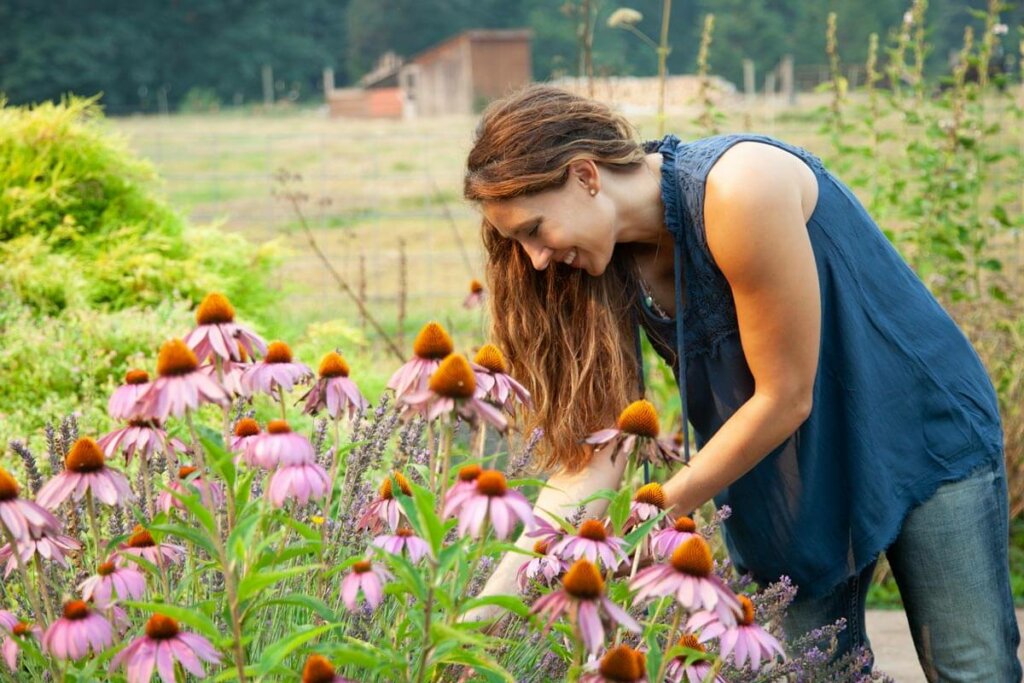
More Posts You May Enjoy
- Herbal Home Remedies for Cold and Flu
- How to Use Herbs and Natural Remedies At Home
- Herbal Medicinal Tea – How to Make Your Own
- 7 Ways to Use Medicinal Herbs at Home
- 8 Medicinal Herbs and Their Uses for Growing an Herbal Tea Garden
- Beef Liver: How to Mask the Taste and Reap the Nutritional Benefits
- Echinacea Tincture – How To Make It & Use It
- How to Prune Herbs & Perennials for Maximum Growth
- Medicinal Kitchen Herbs (6 Herbs You Should Grow)

